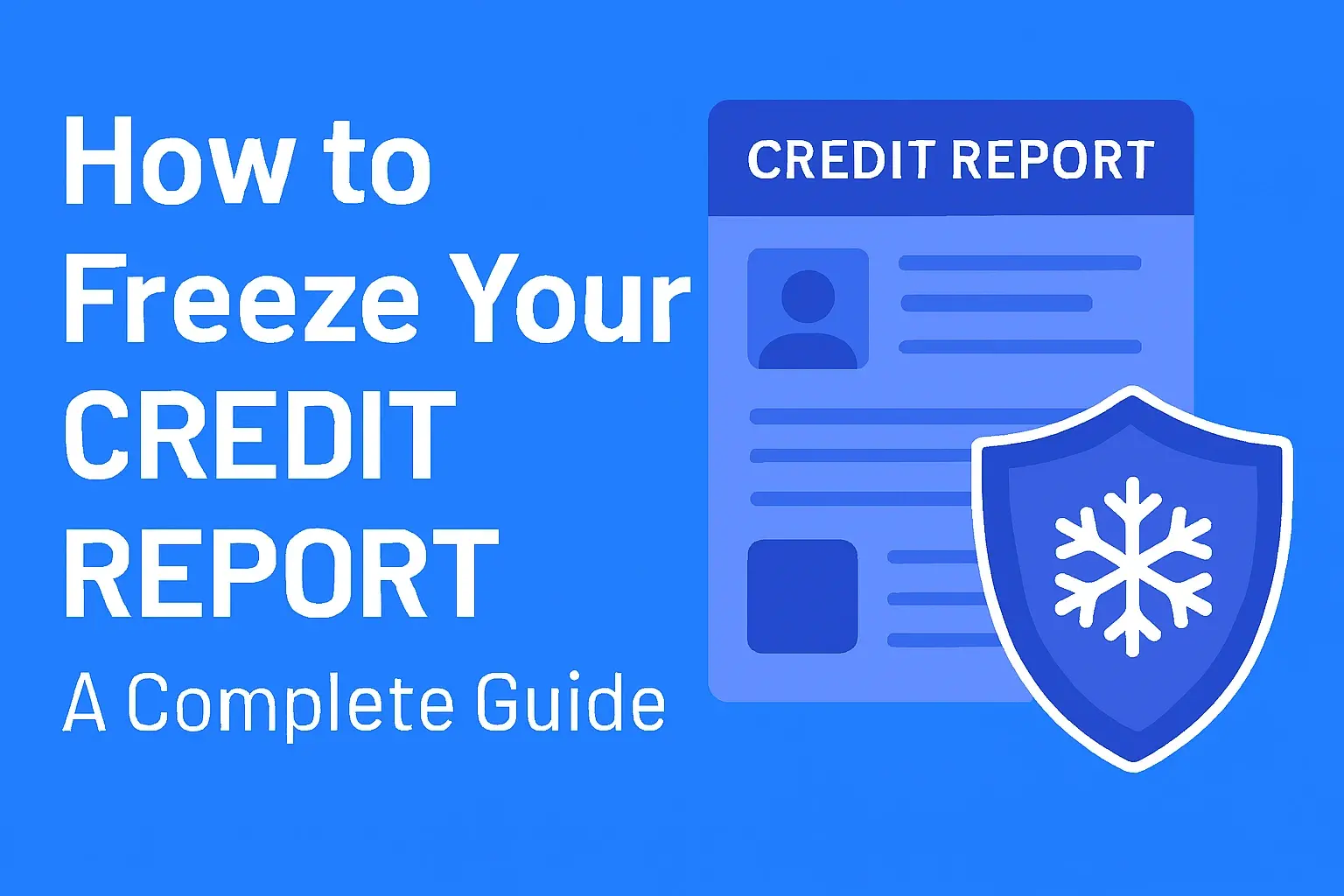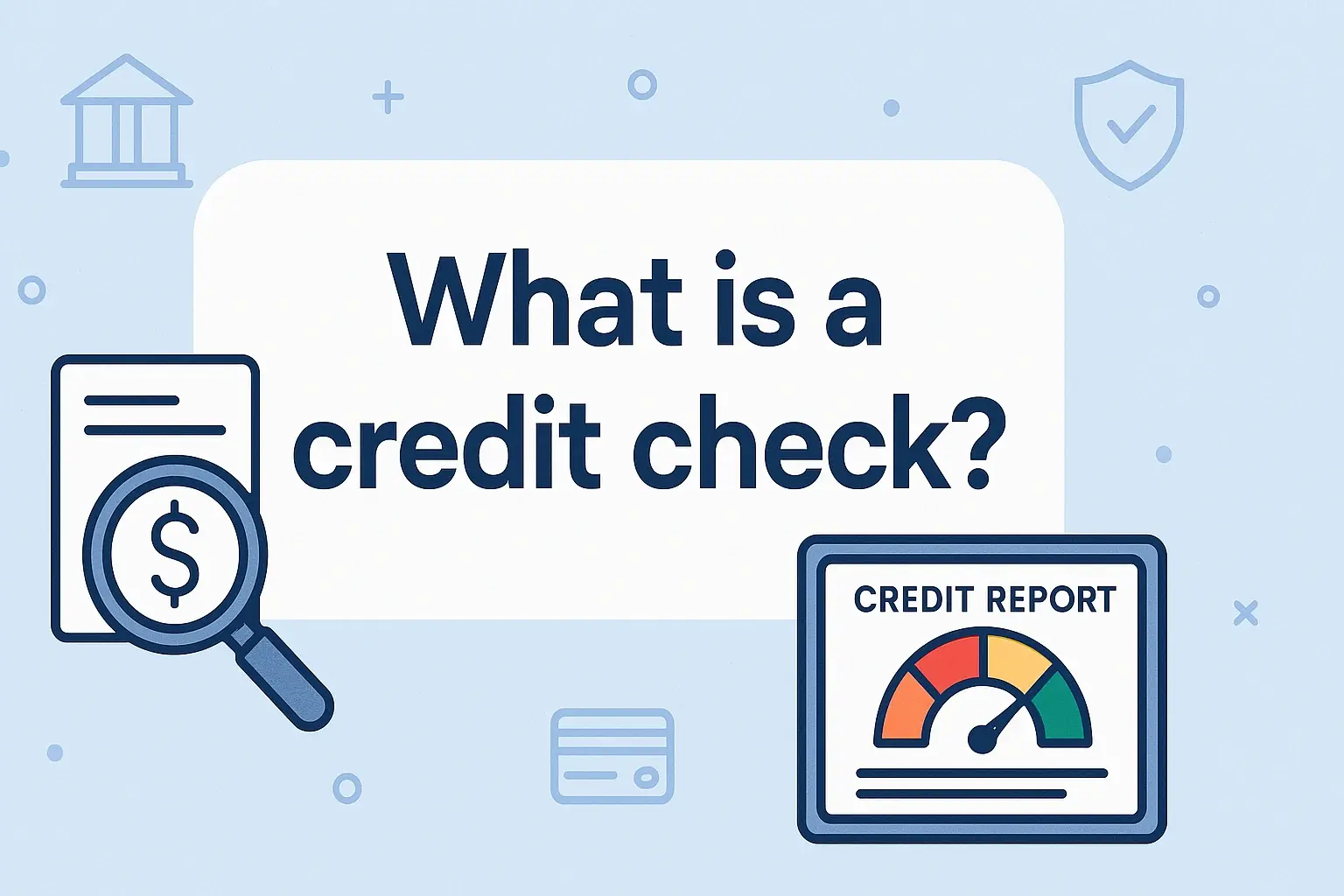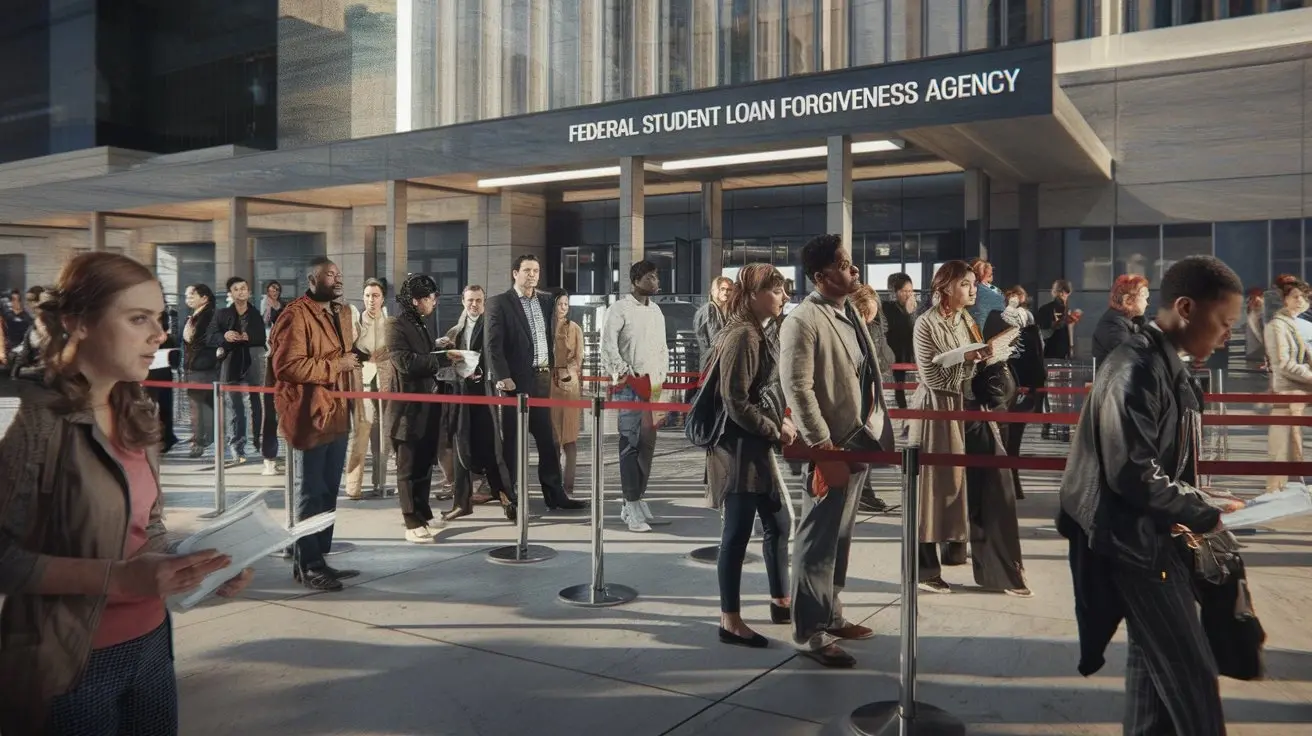-
Posted on: 24 Dec 2022

-
Yes, you absolutely can do credit repair yourself, and this guide will show you how. Discover the steps, tools, and strategies to dispute errors, improve your credit score, and take control of your financial future without hiring an expensive agency.
Understanding Your Credit Reports
Before embarking on your credit repair journey, a foundational understanding of credit reports is paramount. These documents are the bedrock upon which your creditworthiness is assessed. They are compiled by three major credit bureaus: Equifax, Experian, and TransUnion. Each bureau maintains its own version of your credit history, which can sometimes differ.
What Information is Included?
Your credit report contains a wealth of information, including:
- Personal Information: Name, address, Social Security number, date of birth, and employment history. This is used to identify you and ensure the report is accurate.
- Credit Accounts: Details of all your credit accounts, such as credit cards, mortgages, auto loans, and student loans. This includes the lender, account number (often partially masked), date opened, credit limit or loan amount, and the current balance.
- Payment History: This is arguably the most critical section. It details whether you've paid your bills on time, how many days late any payments were, and the recency of those late payments.
- Credit Inquiries: A record of who has accessed your credit report. "Hard inquiries" occur when you apply for new credit, and they can slightly lower your score. "Soft inquiries" occur for promotional checks or background checks and do not affect your score.
- Public Records: Information from public sources, such as bankruptcies, liens, and judgments.
- Credit Score: While not always present on the report itself, your credit score is derived from the information within your report. Common scoring models include FICO and VantageScore.
Why Are Credit Reports Important?
Lenders, landlords, insurers, and even some employers use your credit report and score to gauge your financial responsibility. A good credit report and score can lead to:
- Easier approval for loans and credit cards.
- Lower interest rates on mortgages, auto loans, and credit cards.
- Better terms on insurance policies.
- Easier approval for rental housing.
- Potentially fewer security deposits required for utilities or cell phone plans.
Conversely, errors or negative information on your report can significantly hinder your financial opportunities.
Accessing Your Credit Reports
As of 2025, you are entitled to a free copy of your credit report from each of the three major bureaus annually. This is mandated by the Fair Credit Reporting Act (FCRA). You can obtain these reports through the official website, AnnualCreditReport.com. It's crucial to get reports from all three bureaus, as they may contain different information or errors.
Pro Tip for 2025: Make it a habit to check your reports at least twice a year, spaced out. For example, check Equifax and Experian in January and TransUnion in July. This allows for timely detection of errors or fraudulent activity.
The Legal Framework: Your Rights in Credit Repair
Understanding your rights under federal law is fundamental to effective DIY credit repair. The Fair Credit Reporting Act (FCRA) is the cornerstone legislation that governs how credit bureaus and furnishers of credit information operate. Knowing these rights empowers you to challenge inaccuracies and demand fair treatment.
The Fair Credit Reporting Act (FCRA)
The FCRA, enacted in 1970 and amended over the years, provides consumers with several key protections:
- Accuracy: Credit bureaus must ensure the information they collect and disseminate is accurate and fair.
- Dispute Rights: You have the right to dispute any information on your credit report that you believe is inaccurate or incomplete.
- Investigation: When you dispute information, the credit bureau must investigate your claim, usually within 30 days (or 45 days if you provide additional information during the dispute period). This investigation typically involves contacting the furnisher of the information.
- Furnisher Responsibilities: Credit furnishers (the companies that report your account activity to the bureaus) also have obligations. They must investigate disputes referred to them by the bureaus and correct any inaccuracies.
- Privacy: Your credit report cannot be accessed by just anyone. Permissible purposes are strictly defined, such as for credit transactions, employment screening (with your consent), insurance underwriting, and government licensing.
- Adverse Action: If a lender or other entity takes adverse action against you (e.g., denies credit, offers less favorable terms) based on information in your credit report, they must notify you and provide the name of the bureau that supplied the report, along with information on how to obtain a free copy.
The Credit Repair Organizations Act (CROA)
While you are doing credit repair yourself, it's important to be aware of the CROA. This act protects consumers from fraudulent or deceptive credit repair organizations. It dictates what these organizations can and cannot do, including:
- They cannot charge you for their services before they are fully performed.
- They must provide you with a written contract detailing the services they will perform, the total cost, and your right to cancel within three business days.
- They cannot make false promises or guarantees about improving your credit.
Understanding CROA helps you recognize red flags if you ever consider professional help and reinforces the legitimacy of your own efforts.
Your Rights Regarding Specific Negative Items
The FCRA also outlines specific rights related to negative information:
- Inaccurate Information: You can dispute any factual inaccuracy, such as incorrect balances, wrong account status, or accounts that do not belong to you.
- Outdated Information: Most negative information must be removed from your report after a certain period. Generally, late payments, collections, and charge-offs are removed after seven years. Bankruptcies are typically removed after seven or ten years, depending on the type.
- Identity Theft: If your identity has been stolen, you have the right to have fraudulent accounts removed from your report and to receive a police report to assist in this process.
The Importance of Written Communication
For all disputes and communications with credit bureaus and furnishers, always use written correspondence, preferably certified mail with return receipt requested. This creates a paper trail, proving that you sent the information and that it was received. This documentation is invaluable if disputes escalate or if legal action is ever considered.
Identifying Errors on Your Credit Reports
The first and most crucial step in DIY credit repair is meticulously examining your credit reports for inaccuracies. Errors can range from minor typos to significant misrepresentations that can unfairly drag down your score. A thorough review can uncover issues that, once corrected, can lead to an immediate score improvement.
Common Types of Credit Report Errors
Be vigilant for the following common mistakes:
- Incorrect Personal Information: Wrong addresses, misspelled names, or incorrect Social Security numbers. While seemingly minor, these can sometimes lead to other accounts being misattributed to you.
- Accounts That Aren't Yours: This is a serious error, often indicative of identity theft. It could be a new account opened in your name or an account belonging to someone with a similar name.
- Incorrect Account Balances or Credit Limits: The reported balance might be higher than your actual balance, or the credit limit might be lower, negatively impacting your credit utilization ratio.
- Wrong Account Status: An account marked as "late" when you paid on time, or a "charged-off" account that was actually settled or paid in full.
- Duplicate Accounts: The same debt appearing multiple times on your report, sometimes under different names or account numbers.
- Incorrect Payment History: A payment marked as late when it was made on or before the due date. This is one of the most damaging errors.
- Closed Accounts Still Reporting: Accounts that have been legitimately closed by you or the lender may continue to be reported with incorrect balances or statuses.
- Outdated Information Remaining: Negative items that should have fallen off your report according to FCRA time limits.
- Incorrect Inquiries: Hard inquiries appearing on your report that you did not authorize.
How to Conduct a Thorough Review
Take your time and approach this systematically. Print out your reports from all three bureaus and have a highlighter and pen ready.
- Start with Personal Information: Verify your name, address history, and Social Security number.
- Examine Each Account: Go through every credit account listed. For each one, check:
- Lender Name
- Account Number (ensure it's yours)
- Date Opened
- Credit Limit/Loan Amount
- Current Balance
- Payment History (dates and status of payments)
- Date of Last Activity
- Date Reported Closed (if applicable)
- Review Public Records: Ensure any bankruptcies, liens, or judgments are accurate and within the legal time limits for reporting.
- Check Credit Inquiries: Note all recent hard inquiries. If you see any you don't recognize, they need to be investigated.
- Compare Reports: Cross-reference the information across all three credit reports. Discrepancies between bureaus can sometimes highlight errors or areas that need further investigation.
Gathering Supporting Documentation
As you identify potential errors, start gathering any documents that can support your claim. This might include:
- Bank statements showing proof of payment.
- Copies of canceled checks.
- Correspondence with the creditor or lender.
- Account statements showing a different balance.
- A police report if identity theft is suspected.
- Proof of address if incorrect addresses are listed.
Having this evidence ready will significantly strengthen your dispute.
The Dispute Process: Step-by-Step Guide
Once you've identified errors on your credit reports, the next logical step is to dispute them. The FCRA mandates that credit bureaus investigate these disputes. Here's a detailed, step-by-step guide to effectively dispute inaccuracies yourself.
Step 1: Choose Your Dispute Method
You have three primary ways to dispute information with the credit bureaus:
- Online: Most bureaus allow you to dispute directly through their websites. This is often the fastest method, but ensure you save copies of everything you submit.
- Mail: Sending a dispute letter via certified mail with return receipt requested is the most recommended method for creating a solid paper trail.
- Phone: While you can initiate a dispute by phone, it's generally not recommended as your primary method due to the lack of a verifiable record.
For maximum effectiveness, especially for serious disputes, using certified mail is advised. You can combine methods; for example, initiate online and follow up with a mailed letter.
Step 2: Draft Your Dispute Letter (If Mailing)
Your dispute letter should be clear, concise, and professional. Here’s what to include:
- Your Information: Your full name, address, date of birth, and the last four digits of your Social Security number.
- Bureau's Information: The credit bureau's address for disputes (found on their website or your credit report).
- Account Identification: Clearly state the account number (or the specific item) you are disputing.
- Reason for Dispute: State precisely why you believe the information is inaccurate. Be factual and avoid emotional language. For example, "The balance reported for account ending in XXXX is $5,000, but my statement shows a balance of $4,000." Or, "I have never had an account with [Creditor Name], and this appears to be fraudulent."
- Supporting Documentation: Mention that you are enclosing copies of supporting documents (e.g., "Enclosed are copies of my bank statements proving payment on X date"). Never send originals.
- Desired Resolution: State what you want the bureau to do, such as "Investigate this inaccuracy and remove this erroneous information from my credit report."
- Request for Investigation: Explicitly state that you are requesting an investigation under the FCRA.
- Your Signature and Date: Sign and date the letter.
Example Snippet: "Dear Equifax Dispute Department, I am writing to dispute the accuracy of the account listed under my name and Social Security number ending in XXXX, with account number YYYY. This account is reported as delinquent, but I have attached proof of payment for all due dates. I request that you investigate this matter and remove this inaccurate delinquency from my credit report."
Step 3: Send Your Dispute Letter
Mail your letter via certified mail with return receipt requested. Keep a copy of the letter and the mailing receipt for your records. The credit bureau has 30 days (or 45 if you provide new information during the 30-day period) to investigate.
Step 4: The Credit Bureau's Investigation
During the investigation, the credit bureau will contact the credit furnisher (the company that reported the information) to verify the accuracy of the disputed item. The furnisher must respond to the bureau's request with evidence supporting their reporting.
Step 5: Receiving the Results
After the investigation, the credit bureau will send you a letter detailing their findings. If they agree with your dispute, they will correct the information and provide you with an updated credit report. If they do not agree, they must provide you with the results of their investigation and the basis for their decision. You will also receive information on how to file a complaint with the Consumer Financial Protection Bureau (CFPB) if you are unsatisfied.
Step 6: Dispute with the Furnisher Directly (Optional but Recommended)
In addition to disputing with the credit bureaus, you can also send a dispute letter directly to the credit furnisher. This is often called a "debt validation letter" if you are disputing a collection account. This process can sometimes resolve the issue more quickly and directly.
Key point for 2025: Many consumers find success by disputing directly with furnishers first, as it can sometimes prompt them to correct errors before the bureaus even get involved.
Step 7: Follow Up and Re-Dispute if Necessary
If the bureau fails to investigate properly, or if new evidence arises, you can re-dispute the item. Keep meticulous records of all correspondence and actions taken.
Communicating with Creditors and Bureaus
Effective communication is the lifeblood of successful DIY credit repair. Whether you're interacting with credit bureaus or the original creditors/collection agencies, clarity, professionalism, and documentation are key. This section outlines best practices for these crucial interactions.
Communicating with Credit Bureaus
As detailed in the dispute process, your primary communication with bureaus will be through formal dispute channels. However, there are other scenarios:
- Requesting Reports: Use AnnualCreditReport.com for your free annual reports.
- Updating Personal Information: If your address or name has changed, you'll need to inform the bureaus. This is often done through their online portals or by mail, providing supporting documentation (e.g., marriage certificate, court order for name change, utility bill for address change).
- Following Up: If you haven't received a response within the FCRA's mandated timeframe (30-45 days), send a follow-up letter referencing your original dispute and the date it was sent.
- Filing Complaints: If a bureau fails to uphold its obligations, you can file a complaint with the Consumer Financial Protection Bureau (CFPB) or your state's Attorney General's office.
Best Practice: Always keep copies of any letters sent to or received from credit bureaus. If communicating online, take screenshots of your submissions and any confirmation messages.
Communicating with Credit Furnishers (Creditors and Collection Agencies)
This is where many DIY credit repair efforts encounter challenges. Creditors and collection agencies can be more aggressive, and understanding how to interact with them is vital.
Disputing with Furnishers Directly
As mentioned, you can dispute directly with the company that reports to the bureaus. This is particularly effective for:
- Identity Theft: If an account isn't yours, dispute it immediately with the furnisher and the credit bureau, providing a police report.
- Inaccurate Information: If you have proof a balance is wrong or a payment was missed due to their error, present it.
- Debt Validation: For collection accounts, you have the right to request debt validation within 30 days of initial contact. This requires the collector to prove they own the debt and have the right to collect it.
Negotiating with Creditors and Collectors
Beyond disputes, you might need to negotiate terms for accounts you acknowledge are valid but are struggling to pay.
- Settlement Offers: You can offer to pay a lump sum for less than the full amount owed to close out a debt. Be aware that this may still be reported as a "settled for less than full balance" or "paid collection," which can impact your score, though often less severely than an unpaid debt. Always get settlement agreements in writing before sending payment.
- Payment Plans: If you can't afford a lump sum, negotiate a manageable monthly payment plan. Ensure the agreement specifies how the payment will be reported to the credit bureaus. Ideally, you want it reported as "paid as agreed" or "current."
Key Communication Strategies
- Be Professional: Even if the situation is frustrating, maintain a calm and respectful tone.
- Be Clear and Concise: State your purpose directly and avoid rambling.
- Document Everything: Keep records of all calls (date, time, representative's name, summary of conversation) and all written correspondence.
- Use Certified Mail: For important letters to furnishers, use certified mail with return receipt requested.
- Know Your Rights: Familiarize yourself with the FCRA, the Fair Debt Collection Practices Act (FDCPA), and your state's laws.
- Never Give Up Too Soon: Some issues require persistent follow-up.
What to Avoid
- Admitting Debt You Don't Owe: Be careful not to acknowledge a debt as yours if you are unsure or believe it's inaccurate.
- Making Promises You Can't Keep: Don't agree to payment plans or settlements you cannot realistically fulfill.
- Verbal Agreements Only: Always get important agreements in writing.
- Falling for Scams: Be wary of anyone demanding upfront payment for services that sound too good to be true.
By mastering these communication techniques, you can navigate the complex landscape of credit reporting and debt collection more effectively, significantly improving your chances of successful DIY credit repair.
Building Positive Credit for Long-Term Improvement
Credit repair isn't just about removing negative items; it's also about actively building a positive credit history. Even after addressing errors, a thin credit file or a history of past issues can keep your score low. For 2025, a proactive approach to building good credit is more important than ever.
The Importance of a Good Credit Mix and History
Credit scoring models like FICO and VantageScore consider several factors, with payment history being the most significant. However, other elements play a crucial role:
- Payment History (35% of FICO Score): Paying bills on time, every time.
- Amounts Owed (30% of FICO Score): Keeping credit utilization low (ideally below 30%, but lower is better).
- Length of Credit History (15% of FICO Score): The age of your oldest account and the average age of all your accounts.
- Credit Mix (10% of FICO Score): Having a mix of different credit types (e.g., credit cards, installment loans) can be beneficial.
- New Credit (10% of FICO Score): Opening too many new accounts in a short period can lower your score.
To improve your score long-term, you need to demonstrate responsible credit management.
Strategies for Building Positive Credit
- Pay All Bills On Time, Every Time: This is non-negotiable. Set up auto-pay for minimums or full balances to avoid missing due dates.
- Keep Credit Utilization Low:
- Credit Cards: Aim to use no more than 30% of your available credit limit on each card and overall. For example, on a card with a $1,000 limit, try to keep the balance below $300. Ideally, keep it below 10%.
- Strategies: Pay down balances before the statement closing date, request credit limit increases (if you can manage spending responsibly), or consider a balance transfer to a card with a lower utilization.
- Become an Authorized User: If a trusted friend or family member with excellent credit is willing, they can add you as an authorized user to one of their well-managed credit cards. Their positive payment history and low utilization on that card can then appear on your report, boosting your score. Ensure they understand the responsibilities.
- Consider a Secured Credit Card: These cards require a cash deposit that typically equals your credit limit. They are designed for people with limited or poor credit. Use it responsibly for small purchases and pay it off in full each month. After 6-12 months of good behavior, the issuer may refund your deposit and convert it to an unsecured card, or you can transition to a different card.
- Apply for a Credit-Builder Loan: These are small loans offered by some banks and credit unions specifically to help people build credit. The loan amount is usually held in a savings account and released to you after you've made all the payments. Your on-time payments are reported to the credit bureaus.
- Maintain Old Accounts: Even if you don't use them often, keeping older credit accounts open (especially those with no annual fee) can help increase the average age of your credit history.
- Avoid Closing Unused Accounts: Closing an account can reduce your overall available credit, potentially increasing your credit utilization ratio, and it can also shorten your credit history length if it's an older account.
- Be Mindful of New Credit Applications: Only apply for credit when you genuinely need it. Too many hard inquiries in a short period can negatively impact your score.
Using Credit Responsibly
The goal is to demonstrate to lenders that you are a reliable borrower. This means:
- Making Purchases Strategically: Use credit for planned expenses you can afford to pay off.
- Monitoring Your Credit Reports Regularly: Continue to check your reports for errors and to track your progress.
- Setting Financial Goals: Having clear financial objectives can help you stay disciplined.
Building positive credit is a marathon, not a sprint. By consistently applying these strategies, you can steadily improve your creditworthiness and secure better financial opportunities in the future.
Common Pitfalls to Avoid in DIY Credit Repair
While empowering, the DIY credit repair path is not without its potential traps. Being aware of common mistakes can save you time, money, and further damage to your credit.
Pitfall 1: Falling for "Credit Repair" Scams
The market is unfortunately rife with companies making unrealistic promises. Be wary of:
- Guarantees: No legitimate service can guarantee specific results or the removal of all negative information.
- Upfront Fees: The Credit Repair Organizations Act (CROA) prohibits charging fees before services are rendered.
- Requiring You to Vacate Debt: Legitimate repair doesn't involve asking you to dispute debts you know you owe or to close accounts that are in good standing.
- Asking for Social Security Number or Bank Information Immediately: Reputable services will explain their process first.
- Promising to Remove Legitimate Negative Information: Accurate negative information (like late payments) generally cannot be removed before its reporting period expires unless it's proven to be inaccurate.
Solution: Stick to your DIY efforts or research any company thoroughly, checking with the Better Business Bureau (BBB) and state Attorney General's office.
Pitfall 2: Not Understanding Your Rights
Proceeding without knowledge of the FCRA and FDCPA leaves you vulnerable. You might not know what to dispute, how to dispute it, or what leverage you have.
Solution: Educate yourself on these laws. Resources like the CFPB website are invaluable.
Pitfall 3: Inconsistent or Incomplete Disputing
Disputing only one item, or not providing sufficient evidence, can lead to ineffective results. Also, only disputing with one bureau means errors might persist on others.
Solution: Dispute all identified inaccuracies with all three credit bureaus. Provide thorough documentation and follow up diligently.
Pitfall 4: Closing Old, Unused Accounts
While it might seem like decluttering, closing old accounts can negatively impact your credit utilization ratio and the average age of your credit history, both of which are scoring factors.
Solution: Keep older, no-annual-fee accounts open, even if you use them sparingly. Make a small purchase occasionally and pay it off to keep them active.
Pitfall 5: Opening Too Many New Accounts
Desperate for a quick score boost, some individuals apply for multiple credit cards or loans simultaneously. Each application results in a hard inquiry, and opening many new accounts can signal risk to lenders.
Solution: Apply for new credit only when necessary. Space out applications and focus on responsible use of existing credit.
Pitfall 6: Ignoring Collection Accounts
Collection accounts are highly damaging to your credit score. Ignoring them doesn't make them disappear; they can eventually lead to lawsuits and wage garnishment.
Solution: Address collection accounts. You can try to negotiate a settlement or payment plan. Remember to get all agreements in writing.
Pitfall 7: Not Monitoring Progress
You need to track your credit reports regularly to see if disputes were successful and if your score is improving. Without monitoring, you won't know if your efforts are paying off or if new issues have arisen.
Solution: Obtain free credit reports annually from AnnualCreditReport.com and consider using credit monitoring services (many offer free tiers or trials) to track score changes and alerts.
Pitfall 8: Relying Solely on Credit Repair Software
While software can help organize information, it cannot replace understanding the process or making informed decisions. Software can't negotiate on your behalf or understand the nuances of your specific situation.
Solution: Use software as a tool, but always apply your own judgment and knowledge of your rights.
By being aware of these common pitfalls and proactively avoiding them, you significantly increase your chances of successfully repairing your credit yourself.
When to Consider Professional Help
While DIY credit repair is achievable and cost-effective, there are specific situations where engaging a reputable credit repair professional might be a wise decision. This is not an admission of defeat but a strategic choice based on complexity and resources.
Complex Identity Theft Cases
If you are a victim of extensive identity theft, involving multiple fraudulent accounts across various institutions and potentially criminal activity, the process of untangling it can be overwhelming. A professional agency with experience in these complex scenarios might have the resources and established relationships to expedite the resolution.
Overwhelming Debt Load with Limited Income
If your credit issues stem from significant, unmanageable debt, and you're struggling to even make minimum payments, a credit counseling agency or a reputable debt relief service (distinct from credit repair agencies) might offer more appropriate solutions. These services can help negotiate with creditors, consolidate debt, and create realistic repayment plans, which is a different service than credit repair.
Lack of Time or Energy
Credit repair is time-consuming. It requires research, meticulous record-keeping, drafting letters, and consistent follow-up. If you are juggling a demanding career, family responsibilities, or health issues, you might simply lack the bandwidth to dedicate to the process. In such cases, hiring a reputable agency can free up your time.
Extremely Damaged Credit with Multiple Complex Issues
If your credit report is a labyrinth of errors, judgments, liens, and multiple collection accounts that you find impossible to navigate, a professional agency might offer a structured approach. They have established templates, processes, and knowledge of how to tackle various types of negative items.
When Considering Professional Help: Due Diligence is Crucial
If you decide to seek professional assistance, thorough vetting is non-negotiable:
- Check for Accreditation and Reviews: Look for agencies accredited by organizations like the Better Business Bureau (BBB) and read independent customer reviews.
- Understand Their Services: Ensure they offer credit repair (disputing errors) and not debt settlement or consolidation, unless that's what you need.
- No Upfront Fees: As per CROA, they should not charge you before services are rendered. Payment should be structured for completed work.
- Clear Contract: They must provide a written contract detailing services, costs, and your right to cancel.
- Realistic Promises: Avoid agencies that guarantee specific results or promise to remove accurate negative information.
- Ask Questions: Understand their process, how they communicate, and what their success rates are based on (e.g., percentage of items disputed, percentage of items removed).
Important Distinction: Be aware that credit repair agencies focus on disputing inaccuracies. They cannot legally remove accurate, negative information that is still within its reporting period. If your credit issues are primarily due to legitimate late payments or defaults, focusing on building positive credit is more effective than trying to remove accurate negative marks.
For many, DIY credit repair is sufficient. However, for those facing extreme complexity, time constraints, or extensive identity theft, professional help, when chosen wisely, can be a valuable resource.
Your DIY Credit Repair Toolkit
To effectively tackle credit repair yourself, you need the right tools and resources. Think of this as your essential kit for navigating the process successfully. These are readily available and mostly free or low-cost.
1. Your Credit Reports
Source: AnnualCreditReport.com
Why you need it: The absolute foundation. You need reports from all three bureaus (Equifax, Experian, TransUnion) to identify all errors and discrepancies. You are entitled to one free report from each bureau every 12 months.
2. Dispute Letter Templates
Source: Online resources (e.g., CFPB, Nolo, FTC websites often provide samples), or draft your own based on the guidelines provided earlier.
Why you need it: A structured template ensures you include all necessary information for your disputes, making them more effective and professional.
3. Certified Mail and Return Receipt
Source: United States Postal Service (USPS) or other postal carriers.
Why you need it: Creates a legally verifiable record that your dispute letters were sent and received by the credit bureaus and furnishers. This is crucial for proving your case if disputes are ignored or mishandled.
4. Document Scanner or Smartphone Scanning App
Source: Built-in phone apps (e.g., Notes on iOS, Google Drive on Android) or dedicated scanner apps.
Why you need it: To create clear, digital copies of all supporting documents (statements, proof of payment, IDs) to attach to your disputes or keep for your records. This ensures readability and easy organization.
5. Secure Digital Storage or Filing System
Source: Cloud storage (Google Drive, Dropbox), external hard drive, or a physical filing cabinet.
Why you need it: To organize all your credit reports, dispute letters, responses from bureaus/furnishers, and supporting documentation. A well-organized system prevents lost paperwork and helps you track progress.
6. Calendar or Digital Planner
Source: Google Calendar, Outlook Calendar, or a physical planner.
Why you need it: To track deadlines for responses, follow-up dates, and the reporting expiration dates for negative items. Staying on schedule is vital.
7. Knowledge of Your Rights
Source: Consumer Financial Protection Bureau (CFPB), Federal Trade Commission (FTC), National Consumer Law Center.
Why you need it: Understanding the FCRA, FDCPA, and CROA empowers you to communicate effectively, challenge inaccuracies, and protect yourself from predatory practices. These government sites offer free, reliable information.
8. Credit Monitoring Service (Optional but Recommended)
Source: Many services offer free trials or basic free tiers (e.g., Credit Karma, Credit Sesame, services from major credit bureaus). Some paid services offer more robust features.
Why you need it: To track your credit score changes, receive alerts for new inquiries or accounts, and get a quick overview of your credit health without needing to pull full reports constantly. This helps you see the impact of your repair efforts.
9. Spreadsheet Software
Source: Microsoft Excel, Google Sheets, LibreOffice Calc.
Why you need it: To create a master list of all accounts on your credit report, track dispute status, note dates, and monitor the progress of negative items as they age off your report. This provides a comprehensive overview.
10. Patience and Persistence
Source: Internal fortitude!
Why you need it: Credit repair is not an overnight fix. It requires dedication, attention to detail, and the willingness to follow through even when faced with delays or setbacks. This is perhaps the most critical, albeit intangible, tool in your toolkit.
By gathering and utilizing these tools, you are well-equipped to take on the credit repair process with confidence and a systematic approach.
Conclusion: Empowering Your Credit Repair Journey
The question, "Can I do credit repair myself?" is definitively answered with a resounding yes. As this comprehensive guide has illustrated, armed with knowledge of your rights, a systematic approach to identifying and disputing errors, and a commitment to building positive credit habits, you possess the power to significantly improve your financial standing. The key lies in meticulous record-keeping, persistent communication, and a thorough understanding of the Fair Credit Reporting Act. By leveraging free resources, utilizing a structured toolkit, and staying patient, you can effectively address inaccuracies on your credit reports and lay the groundwork for a stronger credit future. Remember, while professional services exist, the most cost-effective and often most empowering path begins with your own informed actions.











